Complete Guide to Vitamin D for Babies, Toddlers & Kids
You’ve heard about the benefits of vitamin D – we’ll break down why it’s needed, foods rich in vitamin D, how much vitamin D is necessary, and recommendations for vitamin D drops and supplements. Read on for our complete guide to vitamin D for infants and kids ages 0-12 years.
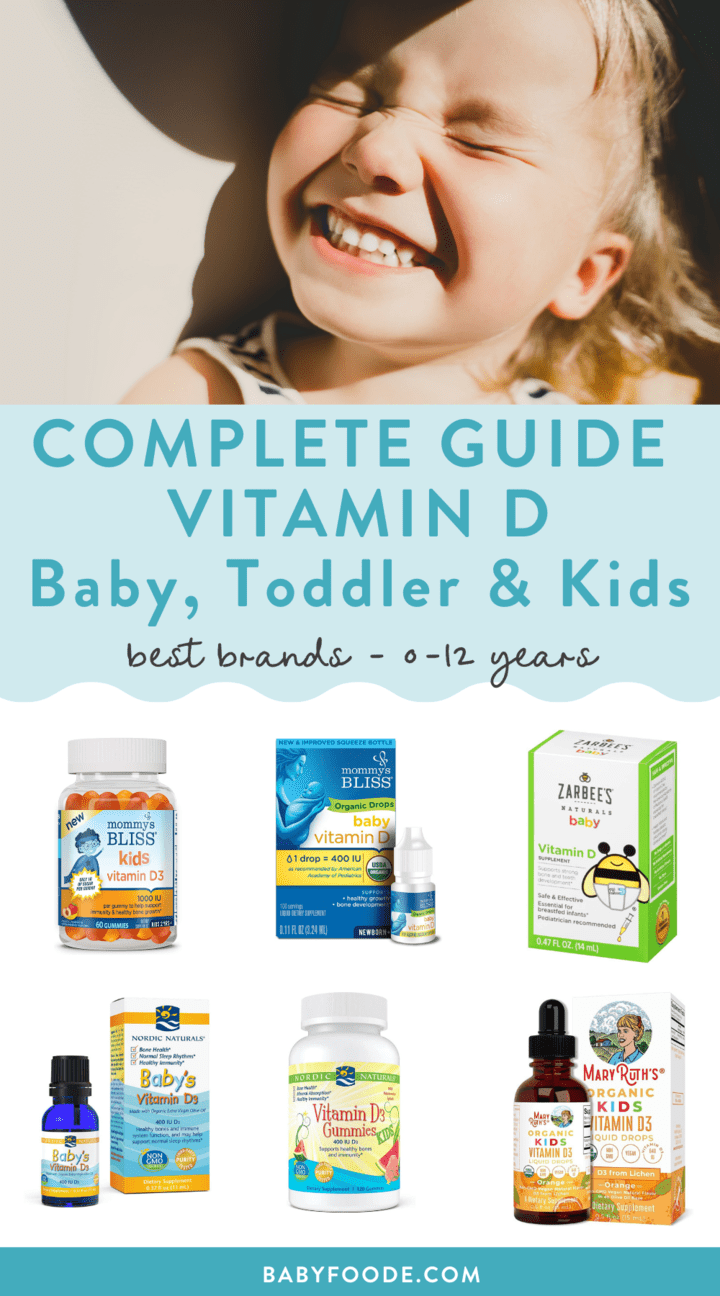
Medically reviewed and co-written by Jamie Johnson, Registered Dietitian Nutritionist (RDN), and Lauren Braaten, Pediatric Occupational Therapist (OT).
Vitamin D for Children
Vitamin D is often called the “sunshine vitamin” because it can be made in the skin from exposure to sunlight. Many people assume that we get an adequate amount of vitamin D simply from drinking milk and a little exposure to the outdoors, but research has found this may not be the case.
Certain factors such as lifestyle changes, sunscreen use, and changes in diet have led to the majority of the population showing signs of vitamin D deficiency. The American Academy of Pediatrics increased the amount of vitamin D recommended for children and adolescents in 2014 due to new research on the life-long health benefits of vitamin D.
What is Vitamin D
Vitamin D is an essential vitamin needed for a variety of bodily functions including:
- Proper absorption of calcium for strong bones.
- Nerve, muscle and immune functions
- Blood sugar regulation
- Helps maintain normal blood pressure
- Helps reduce inflammation
- Prevention of rickets in children, osteomalacia in teens and adults and osteoporosis in older adults.
Why do Children need Vitamin D
Children need vitamin D for proper bone growth and development, immune function and heart health. Vitamin D also helps to heal bones after an injury.
Vitamin D Deficiency
Vitamin D deficiency in children can cause rickets, which is a painful condition that softens bones and can cause bone deformities. A deficiency can also make bones more prone to breaking.
Foods High in Vitamin D
Unfortunately, not many foods are naturally high in vitamin D. The best source of naturally occurring vitamin D is fatty fish like salmon or tuna. Other foods that have a small amount are whole eggs, cheese, beef liver, and mushrooms. But fortunately, many foods in the U.S. have been fortified with vitamin D, including:
- Milk
- Plant based milks
- Ready-to-eat cereals
- Orange juice
- Yogurt
- Infant formula
Vitamin D fortification is usually voluntary and will vary from brand to brand so always read a nutrition facts label to make sure.
Vitamin D with Sun Exposure
Your skin makes vitamin D when exposed to the sun, so it can be a great way to get vitamin D, however, there are a few caveats:
- People living in higher latitudes (especially in winter) will not make as much vitamin D from the sunlight as people living closer to the equator.
- Those with darker skin will make less vitamin D than those with lighter skin.
- People living in places with dense cloud or smog cover will make less.
- The use of sunscreen and full clothing impairs vitamin D production; however it’s recommended to always use sunscreen when out in the sun to prevent skin cancer.
- Children under 6 months should not be exposed to direct sunlight.
Vitamin D for Infants and Babies
How Much Does Vitamin D do Infants and Babies Need
According to the American Academy of Pediatrics, infants and babies, 0-12 months need 10 mcg (400 IU) a day.
Frequently Asked Questions
All infant formulas in the U.S. are supplemented with at least 400 IU/L of vitamin D so if your baby is drinking at least 32 ounces of formula a day, there’s no need to additionally supplement. If baby drinks less than 32 oz., you may need to supplement with 400 IU, which will probably be the case in the first few months.
Breast milk is insufficient in vitamin D so the American Academy of Pediatrics recommends that all breastfed infants supplement with 400 IU of vitamin D a day shortly after birth until he or she is drinking at least 1 liter of whole milk a day.
You can give baby vitamin D drops directly from the dropper into her mouth by aiming it inside of her cheek, not the back of her throat. Or, you can mix the supplement into formula or a bottle of expressed breast milk. Either way, carefully read the dosing instructions on the package.
Most vitamin D supplements contain the recommended daily amount in one dose, so once a day is usually sufficient, but again, read the package to know what the dose is.
Best Vitamin D Drops for Babies
Liquid supplementation is the best option for breast or bottle-fed infants.
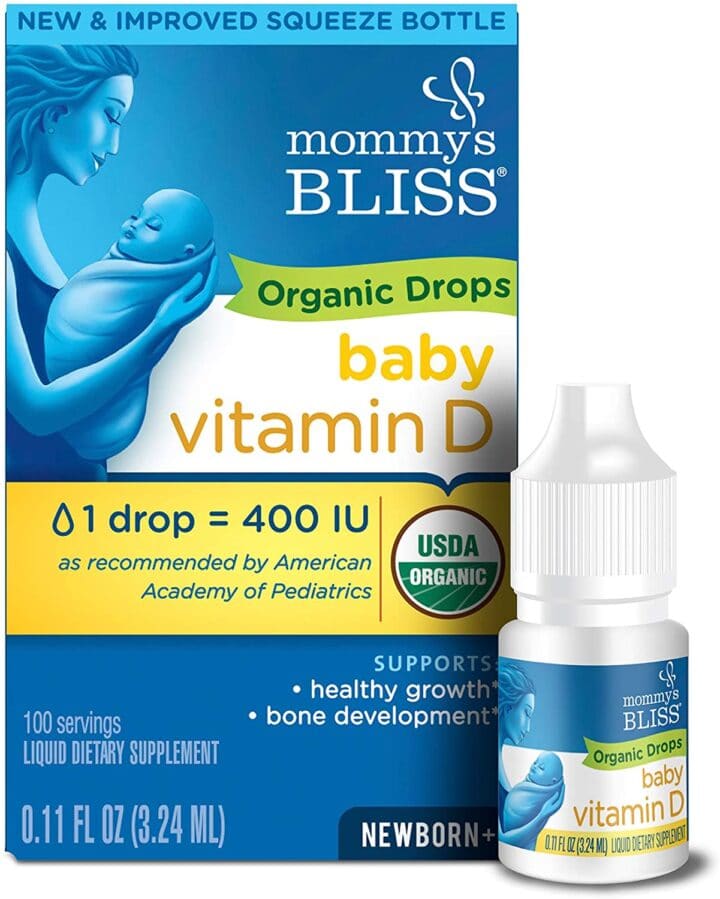
Mommy’s Bliss Organic Vitamin D Drops
Vitamin D drops for newborns and older babies. Serving size is one drop for baby per day.
- Infant vitamin D drops with 400 IU of vitamin D per serving
- Do not require refrigeration
- USDA Certified Organic

Nordic Naturals Baby’s Vitamin D3
These drops are the official baby’s vitamin D of the American Pregnancy Association.
- Non-GMO and third-party tested, surpassing the strictest international standards for purity and freshness
- Certified vegetarian

Zarbee’s Naturals Baby Vitamin D Supplement
A safe and effective supplement for newborns and up, this liquid vitamin D helps infants and toddlers absorb calcium to develop strong bones and teeth.
- Contains no artificial flavors or sweeteners, no dyes and is gluten free
- Syringe included for easy and accurate dosing
Vitamin D for Toddlers and Kids
How Much Does Vitamin D do Toddlers Need
According to the American Academy of Pediatrics, kids 1-13 years old need 15 mcg (600 IU) a day.
Best Vitamin D Supplements for Toddlers and Kids
Toddlers and older kids can take vitamin D supplements in liquid or chewable form.
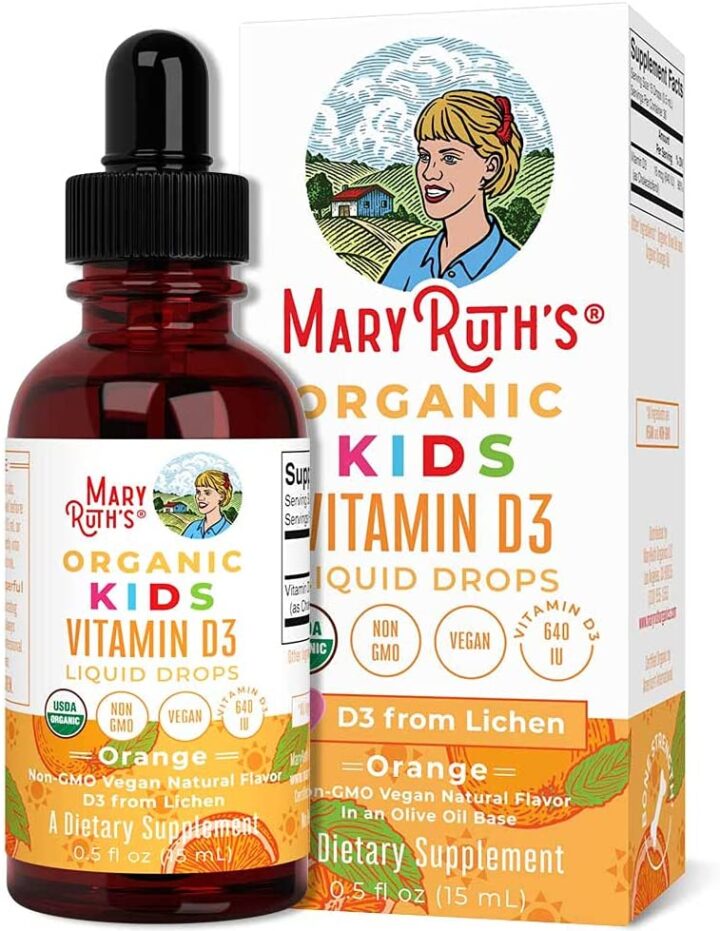
Organic Vitamin D3 Liquid Drops for Kids by MaryRuth’s
These liquid drops are made from the same kind of Vitamin D (cholecalciferol) that your body naturally produces when exposed to sunlight.
- The vitamin D in these drops is sourced from lichen, a vegan source of D3
- Easy-to-take liquid drops formulated for kids ages 4-13 years
- Free of All Common Allergens!
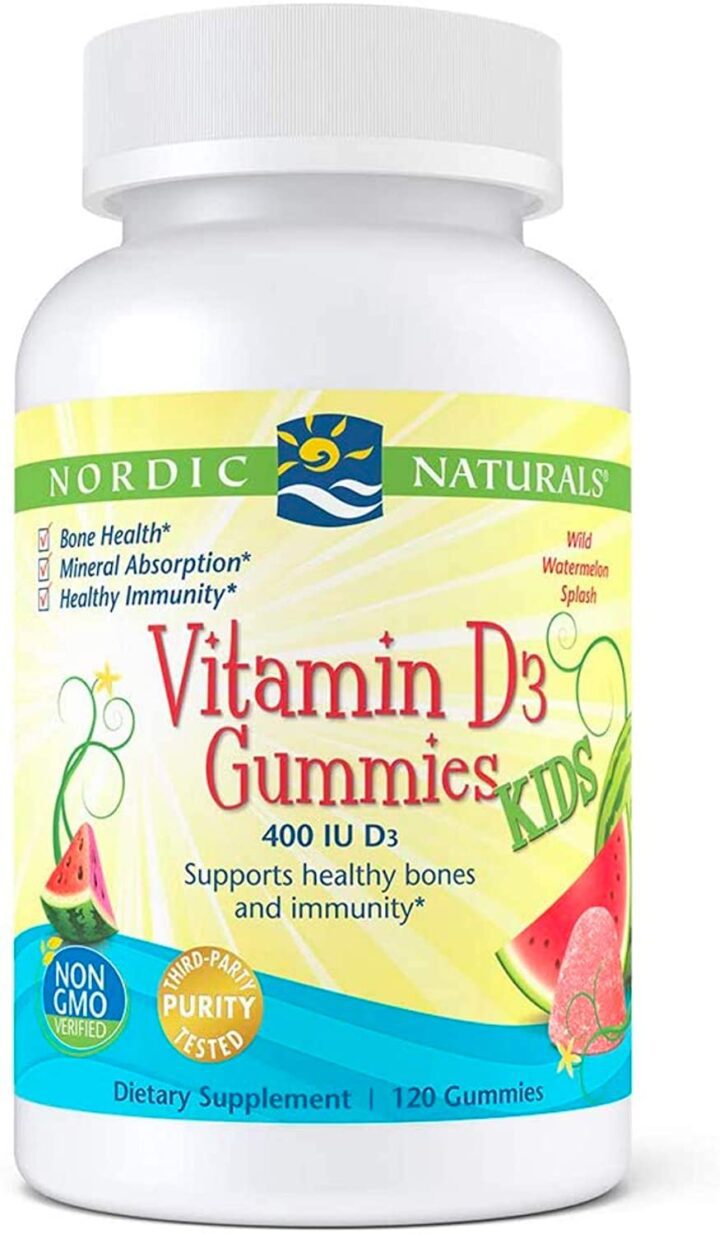
Nordic Naturals Vitamin D3 Gummies Kids
Each Nordic Naturals Vitamin D3 gummy contains cholecalciferol, the form of vitamin D our bodies make naturally from sunlight.
- A safe, tasty and effective way to help give your kids the vitamin D3 they need
- Third-party tested, surpassing the strictest international standards for purity and freshness
- Vegetarian, non-GMO, gluten and dairy free, and contains no artificially derived colors or flavors
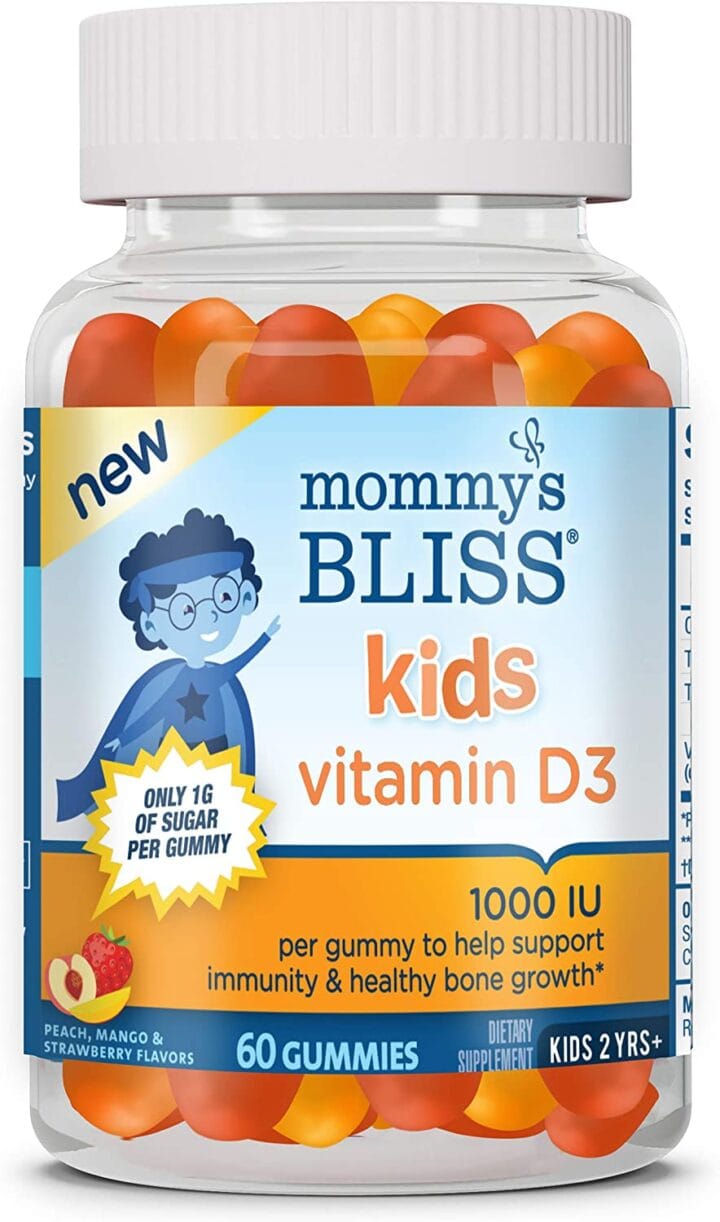
Mommy’s Bliss Kids Vitamin D3 Gummies
These yummy gummies are 100% vegetarian and free from the top 8 allergens.
- Each vitamin gummy contains 1,000 IU Vitamin D3, and only 1 gram of sugar per gummy
- Delicious peach, mango and strawberry flavors that kids love
